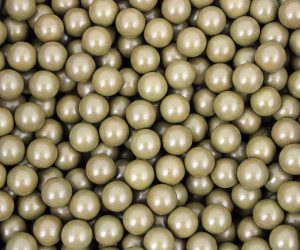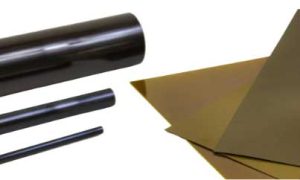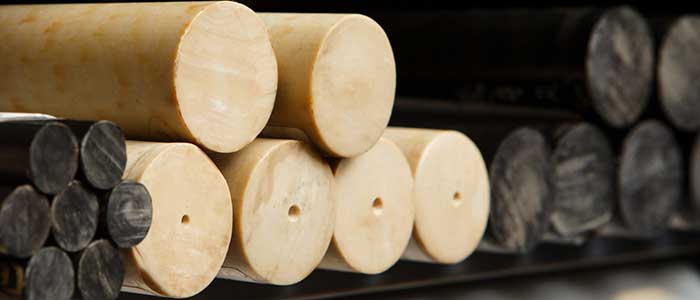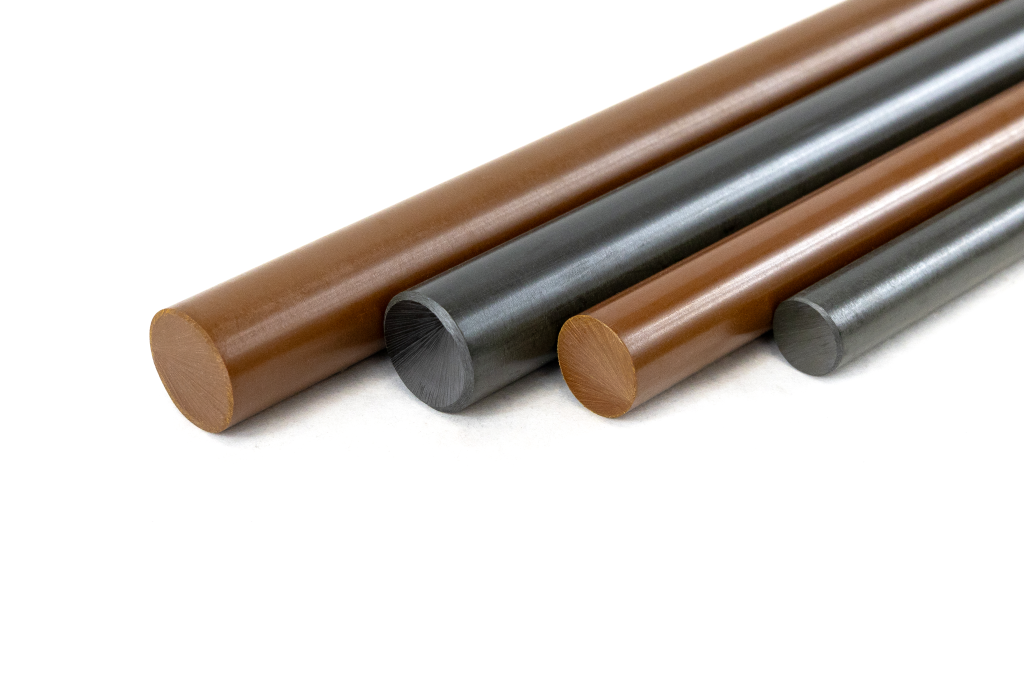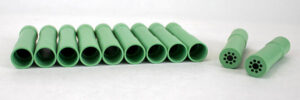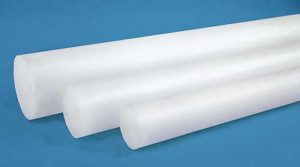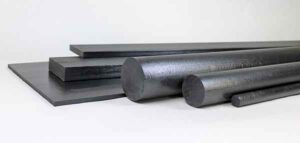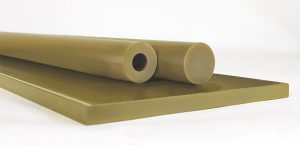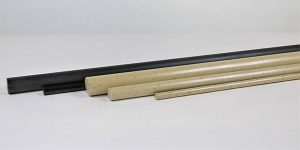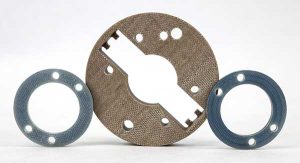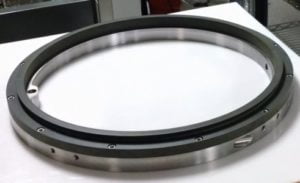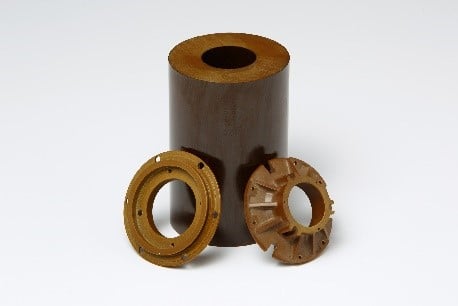This paper is intended to help design engineers and those within the plastics industry supporting them select the process sequence and materials that maximize the performance of service critical parts.
A great deal of folklore exists within the plastics community regarding the relative differences between machined and injection molded plastic parts. This lore is easy to understand given datasheet values published by resin and shape producers. The values listed on resin datasheets are almost always greater than those published by leading shapes suppliers (http://bit.ly/datasheetreview). Don’t let that observation distract or slow down your mission to design and manufacture the best possible part. This misunderstanding can lead to production delays, poor performing and/or over budget parts and in the worst-case, unexpected failures.
Part Design
The elements of any design must consider:
- Performance Requirements
- Dimensional Attributes
- Target Cost
The first two seem obvious but the target cost is often overlooked…after all “aren’t all plastic parts less expensive to make then a metallic alternative?” No, they are not. Many high-performance polymers exceed the cost of specialty metals, even a volume basis. The favorable economics commonly associated with a conversion to plastic come from the improved material yield and reduction in manufacturing steps associated with injection molding a plastic part to final size instead of machining it from a forging, casting or standard shape. Included in the cost however must be the capital needed for a mold if the parts are planned for injection molding. That cost needs to be factored into the expected volume over the lifetime of the part.
Machining parts from stock shapes eliminates the need for tooling and greatly improves delivery of first parts in addition to offering both performance and dimensional advantages of improved precision.
Material Selection
The choice of resin for a new part should first consider the environmental and application needs of the part. Considerations of temperature, chemicals, sunlight are combined with application needs like wear resistance, strength, transparency, etc. to reduce the number candidate material families to a manageable number for further consideration. An aerospace application requiring a balance of high temperature strength and low temperature impact strength for a structural part might lead a designer to Torlon PAI. Or a downhole O&G part requiring chemical inertness in high temperature steam might lead an engineer to settle on PEEK as a resin family. Melt processible plastics like PEI, PSU, PPSU, PPS, acetals, polycarbonate, polyester and even nylons are commonly considered for performance-oriented parts. The answers to a few key questions can generally shorten the list to 1 or 2 very good material families.
- Is my part a bearing and wear part or a structural component?
- What is the expected operating temperature range?
- Are there any appearance requirements (transparency, color, etc.)?
- What specific environmental factors must be considered?
- What minimum strength requirements are needed?
- Is impact resistance and or toughness critical?
A conversation with an industry professional can generally get you pointed into a few plastic families with the answers to the above questions.
Now is when the material selection process can get tricky.
Each material family consists of many grades and viscosity types that have more meaning to those in the processing world, but a better understanding of the terminology will aide those designing parts who generally own the material callout listed on an engineering drawing. For example, Solvay supplies more than 8 grades of Torlon each with a slightly different composition and a few different viscosities (molecular weights) of each grade and more than 10 different PEEK grades, some with different compositions and some with different viscosities. Additives such as glass and carbon fiber, graphite, PTFE, oils, waxes and minerals are included in each of the above base resins to enhance certain properties like strength and/or wear resistance. This situation exists for all resin families meaning many hundreds of candidate materials may exist for a specific part.
So how do I choose and when do I make my final choice of grade?
Design Needs
Designing for maximum strength and stiffness
Low friction and maximum wear resistance
Thermal or electrical insulation/isolation
Fatigue resistance
Maximum chemical resistance
Dimensional stability (low CLTE)
Grade(s)
Glass or carbon reinforced grades
Wear grades containing PTFE and graphite
Unfilled or Glass reinforced grades
Non-reinforced provided max stress level is low
Non-reinforced grades
Glass or carbon reinforced grades
Now is a great time to tentatively select the grade but before permanently selecting a grade and adding it to an engineering drawing, Process Selection must be considered.
Process Selection
Generally, the combination of part size/shape and anticipated volume clearly point to either injection molding or machining as being the right conversion route.
Designing Needs
Large part size
Lower volume part (<5k pcs/yr.)
Parts with difficult to machine features
Lowest cost with high volumes (>10k/yr.)
Maximum toughness/impact strength
Precise tolerances with no draft
Design not yet finalized
Process
Machining
Machining
Injection molding
Injection molding
Machining
Machining
Machining
Once your conversion process route is better known it is time to ask for input from your suppliers. Although there are many materials available as shapes for machining not all resin grades are available in all sizes. Extruded shapes are almost always produced from the highest molecular weight resins, yet many engineers will reference a low viscosity grade designed for injection molding on a print for a part to be machined. This almost always leads to sourcing and/or cost issues. In Torlon nomenclature, Torlon 4203L is the designation for low viscosity (higher flow) grade designated for injection molding. Higher viscosity grades used in shape production do not include the “L” designation (http://bit.ly/gradedesignation). Many prints include a reference to Torlon 4203L, yet the parts are intended to be machined. Among Victrex’s PEEK grade naming system, the 150 grades are low viscosity (higher flow) grades were developed for injection molding thin walled parts whereas the 450 grades are better suited for extruded shapes and thick-walled parts. Once again adding a material callout for 150G for machined parts will make compliance to the drawing impossible. This same situation exists for many other materials including acetal and nylon-based plastics.
Often glass and carbon reinforced grades are difficult to find in larger sizes and shapes. Experienced injection molders will look at part cross-sections and the overall geometry before deciding the grade which will fill the mold cavity best as there are often 2 or 3 viscosities they can chose from. Always remember low viscosity (high flow) resins fill tools faster but offer less toughness as finish parts. Balancing the two demands is part of material selection.
 Injection molding is a very fast and efficient route to making plastic parts, but an initial tooling expense must be justified. Today molds range from $10,000 to $100,000 or more. Reinforced grades can pose processing challenges due to fiber orientation, but these are almost always overcome by working closely with your molder who can draw on years of experience anticipating mold flow and the resultant directionality of mechanical properties. Extruded shapes enable a very robust machining process that enables the highest possible stiffness and strength through part orientation with little or no tooling or NRE expense. Compression molded shapes allow certain non-meltable plastics to be made into shapes. Examples of plastics that are only compression molded are PTFE, UHMW and nearly all thermosets. Other materials like PEEK and PAI are processed via both extrusion and compression molding. Although the mechanical strength/stiffness of most compression-molded plastic is lower than their melt processed siblings, they can be more dimensionally stable during machining.
Injection molding is a very fast and efficient route to making plastic parts, but an initial tooling expense must be justified. Today molds range from $10,000 to $100,000 or more. Reinforced grades can pose processing challenges due to fiber orientation, but these are almost always overcome by working closely with your molder who can draw on years of experience anticipating mold flow and the resultant directionality of mechanical properties. Extruded shapes enable a very robust machining process that enables the highest possible stiffness and strength through part orientation with little or no tooling or NRE expense. Compression molded shapes allow certain non-meltable plastics to be made into shapes. Examples of plastics that are only compression molded are PTFE, UHMW and nearly all thermosets. Other materials like PEEK and PAI are processed via both extrusion and compression molding. Although the mechanical strength/stiffness of most compression-molded plastic is lower than their melt processed siblings, they can be more dimensionally stable during machining.
As not all shapes and sizes are produced the same by each manufacturer, different strength and stiffness characteristics can result even within the same grade of material. Working closely with your machinist and the shapes manufacturer is the most reliable way to ensure your parts are the very best and capable of performing as needed.
Production phases over the lifetime of a part can include both machining and molding. Many parts are initially produced via machining when the volume is low and the design still fluid and are later converted to injection molding once the design is settled and concept proven. Design and sourcing engineers need experience with all production routes or should at least work with suppliers who have broad experience in processing polymers. Too many times design engineers have been frustrated converting machined plastic parts into injection molded parts expecting all performance attributes to remain the same. Fiber orientation, part toughness, wear rates and precision are almost always different between machined and injection molded parts. Even machining an injection-molded shape or part can yield different characteristics than machining (a part) from an extruded or compression molded shape. Understanding these differences from the project beginning will help alleviate unexpected surprises in later production stages.
Designing with high performance polymers where part and process design are critical to system performance requires expertise in all intended process options. Drake’s unique combination of in-house extrusion, injection-molding and machining allows us to always select the best process for a specific part, with both economics and performance in mind.
Choose your processes and your processors carefully remembering the adage:
There are no bad processes… but there are uninformed processors and engineers who do not inquire about functional requirements and modify their approach to material and process selection based on this important information.

